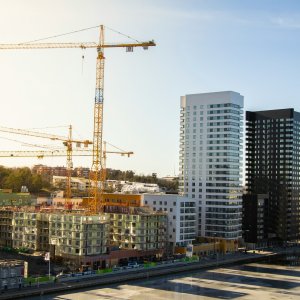
Investment in Infrastructure has Dropped by 48.4 percent in 1Q21
 By Lorenzo Núñez | Livestream Producer -
Wed, 05/19/2021 - 08:00
By Lorenzo Núñez | Livestream Producer -
Wed, 05/19/2021 - 08:00
The Ministry of Communications and Transportation (SCT) allocated a total of US$323 million during 1Q2021 to infrastructure projects such as bridges, roads, railways and port works, representing 48.4 percent less investments compared to 4Q2020, reported the Ministry of Finance and Public Credit.
President Lopez Obrador’s administration has been characterized for sending out many unsettling signals that have discouraged national and international investments. The total investment amount spent during 1Q2021 is lower than what was spent in 4Q2020, where the average investment was of US$535 million. The lowest allocated investment amount so far during the administration occurred in 1Q2019, totaling US$157 million, reported Inmobiliare. The Center for Economic and Budgetary Research (CIEP) commented, “the decrease in this sector ends up causing problems in the human and economic development of a community.”
This drop in investment amount could be a product of uncertainties that are still affecting the market. While the world is slowly recovering from the COVID-19 pandemic, Mexico has not been able to clear up some of the skepticism that has kept investment away. While there have been some major investment announcements like the one recently announced by Christopher Nassetta, Chairman of the Board of the World Travel and Tourism Council (WTTC), reporting that the organization will invest nearly US$2.5 billion in Mexican tourism projects over the next few years, infrastructure investment in general continues to decline in Mexico.
In addition, construction as a whole is having a slow start as well. As reported by MBN, Mexico´s construction industry had a 6.8 percent annual drop during1Q2021, extending its recessionary trend to 20 quarters, according to INEGI. The cycle of decline started in 2016 and since then it has reported contractions in its production levels. Analysts at BX+ said the construction industry is the one that has lagged the most because it has a weak return on investment and high input costs.
Analysts from BX+ (Banco ver por más) mentioned that construction will begin to show signs of improvement, but at a slower pace. Private construction spending may lag in an environment of uncertainty where recent economic policies, up-coming elections (June 6) low fiscal support and weak domestic consumption play an important role in deterring investment projects. On the bright side, low interest rates and an expected recovery in certain sectors, such as manufacturing and exports show signs of recovery.
















